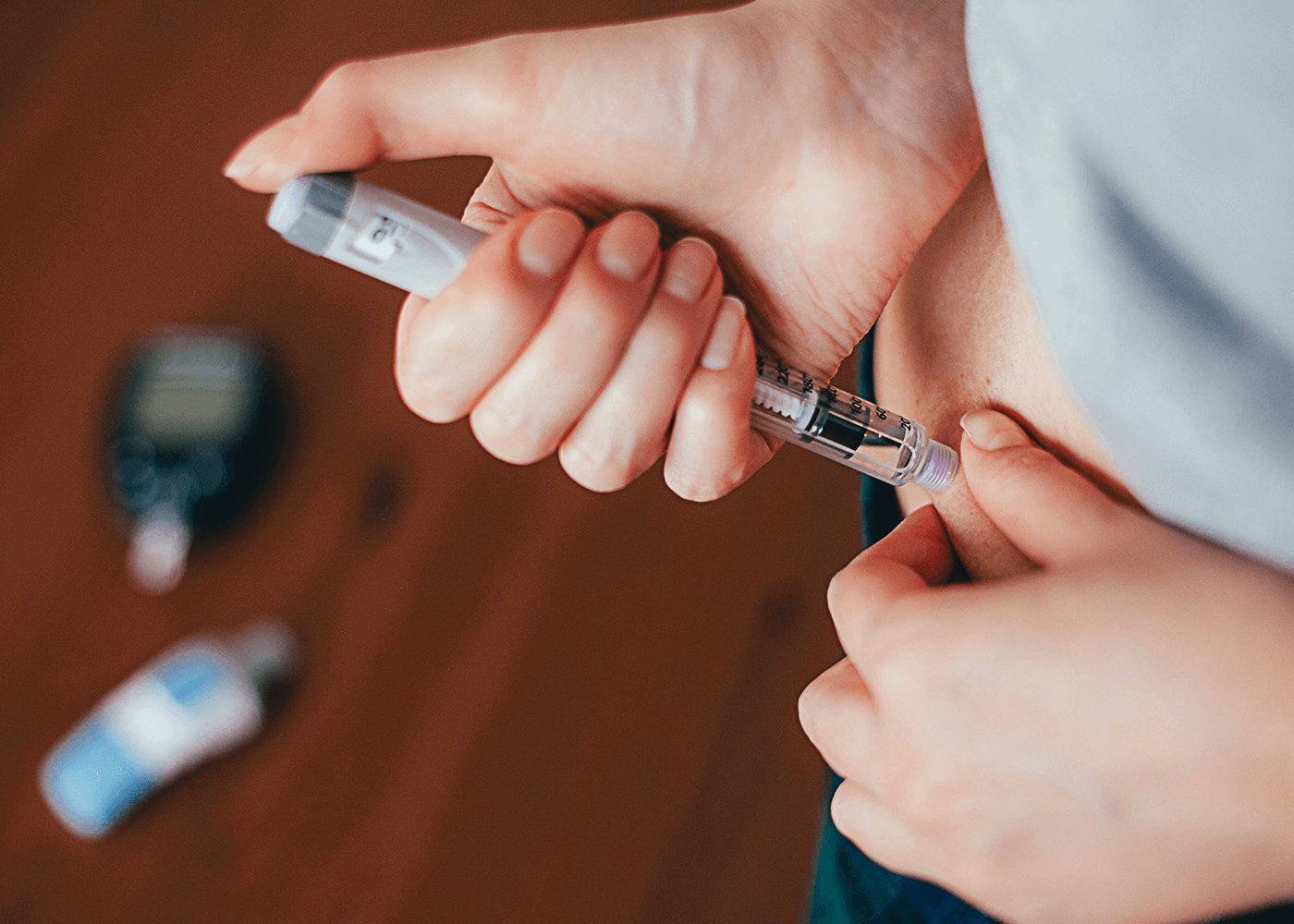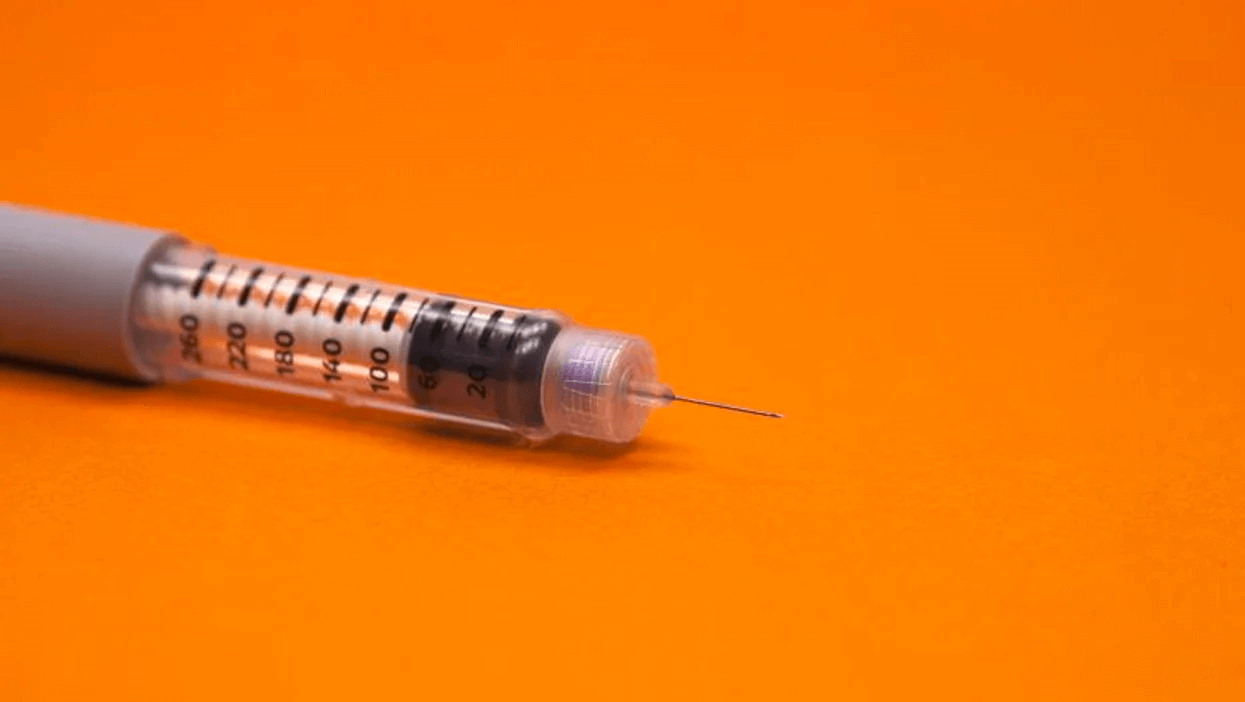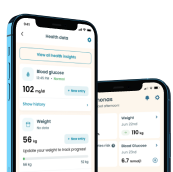How Effective Is the GLP-1 RA Drug Class for Diabetes?

Diabetes is a chronic condition that most patients tend to live with. As far as conventional treatments are concerned, almost all drugs and treatments available are for management purposes. There’s currently no direct cure for the condition, which doubles as one of the most popular causes of preventable disease death in the United States. However, many drugs help control the disease symptoms and give people with the condition a close to normal healthy life.
Most drugs for diabetes are designed to control the symptoms like blood sugar spikes and hyperglycemia due to the respective complications each present. Some of the medications that experts prescribe include insulin injection, which boosts insulin insensitivity and reduces insulin resistance.
There are also recommended medications meant to control the disease so that it doesn’t lead to more complications like cardiovascular disease. One of the groups of drugs in this category is the GLP-1 RA class.
The GLP-1 RA is believed to be an advanced group of drugs that help people with established cardiovascular disease caused by worsened diabetes recover gradually. For patients who’re yet to develop more diabetes complications, these drugs are designed to prevent them from experiencing further complications.
This in-depth guide aims to shed more light on the effectiveness of GLP-1 RA as a diabetes treatment and how it could affect the daily lives of people with the condition.
What Is the GLP-1 RA Drug Class?
GLP-1 RA, as they’re generally called, is a group of drugs for controlling and treating advanced type 2 diabetes. The abbreviation GLP-1 RA stands for Glucagon-Like Peptide-1 Receptor Agonists, and both patients in their early and later stages of diabetes have found them pretty useful in treating their condition.
These drugs are also effective in treating cardiovascular conditions, especially when it comes to heart and kidney health. Many cardiovascular outcomes trials have shown a high correlation between recovery rate from kidney and health issues and the use of GLP-1 RAs.
GLP-1 RAs are available in many forms, and therapies employing them usually influence blood sugar levels uniquely. This means that GLP-1 RAs don’t react the same way in every person. Another important note for people with diabetes is that all GLP-1 RAs regulate food appetite and, by this action, control weight.
The Different Types of GLP-1 RAs

GLP-1 RAs come in different forms, and each one has its respective benefits. All of the different forms are divided into two major categories, including:
- Long-acting GLP-1 RAs
- Short-acting GLP-1 RAs
The difference between the two categories is that the effect of the former lasts for days after administration, while that of the latter only lasts several hours. The choice of which to follow totally depends on the type of blood sugar spikes that the patient experiences and their frequency.
Let’s examine common examples of each class in detail.
Long-Acting GLP-1 RAs
Here, we focus on the examples of GLP-1 RAs with an extensive duration of action.
Exenatide (Byetta)
This is an injectable drug that helps lower blood glucose levels. It’s an FDA-approved medication used to treat people with type 2 diabetes. This drug falls under the group of incretin mimetics as it acts like the incretin hormone that the intestine produces and deposits in the blood in a reaction to food.
It increases insulin secretion through the pancreas, slows down insulin absorption through the guts, and lowers the glucagon action. This helps reduce the glucose levels in the blood and reduces appetite.
Research proves that this man-made hormone that behaves like GLP-1 has helped lower blood sugar and weight in people with diabetes.
Lixisenatide (Adlyxin)
This medication is an injectable solution designed as a pen injector given through the skin. It’s used to treat people with diabetes and helps control blood sugar levels by allowing the pancreas to produce insulin efficiently.
This FDA-approved medication works effectively when combined with exercise and diet. While adults with diabetes can use it safely, it’s not approved for children or anyone below 18.
Oral Semaglutide (Rybelsus)
This tablet is swallowed, comes in strengths of 3 mg, 7 mg, and 14 mg, and is taken once daily. It’s used to treat people with type 2 diabetes as it helps manage blood sugar when combined with exercise and diet.
This FDA-approved drug contains an active ingredient called semaglutide that falls under the glucagon-like peptide-1 (GLP-1) group. Research indicates that Rybelsus helps reduce blood glucose more efficiently than treatment without an active drug. Remarkably, a 26-week study of adults with type 2 diabetes who took Rybelsus proved that they experienced less than 7% HbA1c level.
Short-Acting GLP-1 RAs
Lasting in your body for less than 24 hours, the following drugs have found extensive use in diabetes management:
Dulaglutide (Trulicity)
This is a liquid solution in an injectable disposable pen taken through the skin once a week. It’s used to treat adults who have type 2 diabetes as it helps reduce blood sugar when combined with exercise and diet.
This FDA-approved drug is also prescribed to help reduce a person’s risk of cardiovascular disease, heart attack, and stroke. More particularly, Trulicity minimizes the risk of death from cardiovascular disease.
The medication contains dulaglutide, which belongs to the group referred to as glucagon-like peptide 1 (GLP-1).
Exenatide Extended-Release (Bydureon)
This is a liquid suspension in the form of an injection taken through the skin, and it comes either as a pen injector or syringe. It’s used to treat people with type 2 diabetes as it helps improve blood glucose levels.
Bydureon enables the pancreas to produce insulin efficiently. When combined with exercise and diet, Bydureon helps improve blood sugar control in people who have type 2 diabetes.
This medication contains extended-release exenatide, which belongs to the glucagon-like peptide-1 (GLP-1) group. Both adults and children 10 years and above can use this medication.
Liraglutide (Victoza)
This is a liquid solution formulated as an injection taken through the skin, and it comes either as a pen injector or syringe. It’s used to improve the blood glucose levels in people with type 2 diabetes. Victoza also helps to reduce the risk of cardiovascular disease, stroke, and heart attack.
This medication contains an active ingredient called liraglutide, and it falls under the glucagon-like peptide 1 (GLP-1) group. Victoza has been shown through research to effectively improve the blood glucose levels in children and adults with type 2 diabetes. The FDA approves it for use in adults and children 10 years and above.
Semaglutide (Ozempic)
This is a liquid solution designed as an injection taken through the skin, and it’s formulated as a pen injector. The pen injector is of two types, and both contain 2 mg of semaglutide but don’t give the same dose. It’s used to treat people with type 2 diabetes to improve blood glucose levels.
This FDA-approved medication contains an active ingredient, semaglutide, which falls under the glucagon-like peptide 1 (GLP- 1) group. The American Diabetes Association (ADA) recommends Ozempic to treat adults with type 2 diabetes and other conditions like heart failure, kidney disease, or cardiovascular disease.
How Are GLP-1 RAs Taken?
GLP-1 RAs are mostly in liquid forms injected into the body. The only pill form of GLP-1 RAs is oral semaglutide. Its effects are the same as those of the other GLP-1 RAs, with its target patients being people who aren’t keen on taking shots.
The injectable forms of GLP-1 RAs are packaged in disposable injection devices. These devices are much smaller than the normal syringe. These mini syringes are designed so that patients don’t feel any more than a small sting after being injected.
Most pen injections of GLP-1 RAs are to be used only once and come with pre-measured GLP-1 RA doses. The ones without pre-measured doses will typically need the guidance of a doctor or endocrinologist.
Taking any medication is quite simple. You can administer the treatment yourself by injecting it into your stomach, thigh, or upper arm. As already stated in this guide, some medications require taking shots twice a day or once a week.
Finally, you may need to start your dosage gradually. You have to follow your doctor’s recommendation and gradually increase the dose steadily if need be.
Expert Considerations on GLP-1 RAs Use

In the medical world, the major way to confirm the efficacy of a drug is through clinical trials and other related research. There have been many established and currently ongoing GLP-1 RAs-focused clinical trials that confirm the effectiveness of these drugs in handling diabetes, its related symptoms and possible complications. The results of many of the observations on GLP-1 RAs in cardiovascular outcome trials (CVOTs) showed encouraging results that patients with diabetes and pre-existing cardiovascular disease can rely on.
Here, we consider some of the trials to help patients make a more informed choice on GLP-1 RAs.
An observed clinical trial published by the National Center for Biotechnology Information analyzed the effectiveness of GLP-1 RA drugs. Titled “GLP-1 Receptor Agonists: A Review of Head-to-Head Clinical Studies,” theparticipants were all parts of the stage III program, which involved an examination of the effectiveness of different GLP-1 RA agonists on them.
The major GLP-1 RAs were tested on patients to see their results on the A1C. The clinical trial result showed that the drugs, in their own right, are incredibly effective against diabetes systems and cardiovascular disease.
Eight head-to-head comparisons were performed with some of the patients taking exenatide once weekly, exenatide twice daily, and other agents such as liraglutide, lixisenatide, dulaglutide, and albiglutide.
The trial results confirmed that all agonist agents of the drugs were highly effective in reducing A1C. Some of them were better at reducing A1C and blood sugar than others. However, they all moved towards the same goal.



The different drugs also showed effectiveness in the area of weight reduction. Patients exposed to the same causative factors outside the drugs all lost weight differently. Those exposed to the same agonist had a similar weight loss trend different from another group of patients that lost weight after using a different GLP-1 RA entirely.
None of the GLP1 RAs used in the trial triggered any type of hypoglycemia or risk that too many diabetes control treatments could cause. A key finding was that patients who usually have acute coronary syndrome didn’t present with as many manifestations as during the observation period.
However, a major difference that the trial presented was how each agent affected other factors of the people in the trial. The rate of weight loss among the patients was quite different in people. Also, the side effects of each GLP-1 RA were different in patients. Notable among these was that aftermath reactions to the drugs were more pronounced in people exposed to the long-acting exenatide weekly than those injected twice daily.
This reaction was believed to be caused by the body not getting used to the administration of the former pattern. The body’s metabolism was forced to change each time following the administration of a new exenatide shot after seven days. The outward reaction of the weekly shot was the formation of small nodules at the skin area where it was administered.
The risk of weekly shots in patients who had to take shots once a week didn’t in any way deter them from continuing treatmenet, as the trend of the clinical trial confirmed. There was more discontinuation of patients in the group that had to take two shots daily, which was a major concern among the researchers. The result gave an idea of how people are likely to react to therapy that involves daily shots of injected agents.
The discontinuation rate of people exposed to two shots daily was almost 10% higher than those who only needed to take exenatide once weekly. Experts believe this figure is likely to be higher for normal treatments than in randomized controlled trials where patients were made aware of their participation.
Another 2021 study titled “GLP-1 Receptor Agonists and Cardiorenal Outcomes in Type 2 Diabetes: An Updated Meta-Analysis of Eight CVOTs” focusing on how GLP-1 RAs affect type 2 diabetes and major adverse cardiovascular events gave promising results. People exposed to all forms of GLP-1 RAs were found to enjoy a decreased risk of high blood sugar spikes and myocardial infarction. The major issue with the primary outcome was the inability of some volunteers to complete the entire observation.
Note: CVOTs stand for cardiovascular outcome trials.
Potential Benefits of GLP-1 RA for People With Diabetes
Having examined research’s stance on this group of antidiabetic medications, let’s outline the different means by which they mediate their actions.
Reduces High Blood Sugar
GLP-1 RAs are among the major treatments that reduce blood sugar in advanced diabetes stages. Unlike other drugs and treatments, GLP-1 RAs effectively reduce spikes to the minimum and, if not moderately administered, could even lead to hypoglycemia (unhealthy low blood sugar).
GLP-1 RAs also reduce blood sugar by focusing on the liver. The liver is one of the major organs that release extra blood, and GLP-1 RAs medication slows down the rate at which the liver performs this function in people with diabetes.
Increases the Production of insulin
GLP-1 RAs increase the production of insulin in people with diabetes. Most meal choices usually lead to an increase in insulin, which is especially common at night when the body’s metabolism is at rest. GLP-1 RAs force the pancreas to produce more insulin that combats extra sugar and glucose in the bloodstream.
It is, however, important that diabetics take the medication with caution and not use it with an insulin pump. Doing so could trigger excessively high insulin levels and cause hypoglycemia.
Cardiovascular Disease Prevention
While there’s a need for more research, all indications prove that GLP-1 RAs treatment helps against cardiovascular mortality. Diabetes and cardiovascular death are somewhat related as the latter results from the former and have a high mortality risk.
While many diabetes medications are more effective for controlling blood sugar and do little to help against cardiovascular risk, all GLP-1 RA drugs/medications cause a significant reduction in cardiovascular diseases and improve general cardiovascular safety. Most research indicate that kidney and heart diseases are the major conditions that GLP-1 RAs effectively control.
A randomized placebo-controlled trial also confirms that GLP-1 RAs effectively reduce the risk of heart and chronic kidney disease.
Decreases Appetite for Sugary Foods
This is crucial in controlling diabetes. Excessive consumption of food leads to an increased urge to consume carbohydrates. GLP-1 RAs decrease appetite and subsequently reduce how much carbohydrates people with diabetes consume. This benefit also translates into healthy weight loss.
Examining Interactions: How Safe is the Use of the GLP-1 RA Drug Class With Other Diabetes Drugs?
An important consideration that people with diabetes who depend on drugs must consider is their interaction with each other. It’s not uncommon for diabetics to take different treatments that are unrelated in certain circumstances, leading to a mix that could affect their health positively or negatively.
In most cases, diabetes therapies may combine GLP-1 RAs with other drugs to better people with the condition. The typical first-time treatment recommendation for diabetics is metformin, which focuses on reducing blood sugar spikes to the healthy range. However, if this medication isn’t effective, the next step will be to add GLP-1 RAs to control blood sugar.
Health experts usually recommend patients a GLP-1 RA agent alongside metformin. There are no complications when the two medications are taken. Moreover, since they’re often prescribed together, the chances that GLP-1 RAs will need to be taken alongside another drug are pretty slim.
When GLP-1 RAs aren’t prescribed alongside metformin, certain therapies may combine them with insulin medications. Unfortunately, the odds of GLP-1 RA negatively interacting with insulin medications are quite high. There’s a significantly increased possibility of patients experiencing too much low blood sugar and hypoglycemia. Hence, it’s mostly recommended that patients only take one of either insulin medications or GLP-1 RA agents.
GLP-1 RAs also reduce digestion significantly, one of the main ways to reduce the rate of high glycemic index foods converting to blood glucose and potential spikes. While these effects are great, patients who aren’t well informed may experience a change in their digestive capability and get drugs or medications that aid digestion. This results in the simultaneous use of two medications with contrasting effects.
Due to the possibility of GLP-1 RAs interacting with other drugs, patients should seek medical experts’ recommendations for better health.
Other Ways to Control Your Diabetes Condition

GLP-1 RAs effectively control high blood sugar and cardiovascular diseases like heart complications and kidney failures. These benefits make these medications one of the reliable therapies that people at the beginning and delicate stages of diabetes can trust. However, like most diabetes medications, there’s no doubt that GLP-1 RAs have possible side effects that pose legitimate risks to patients’ health.
Due to the concerns that GLP-1 RAs and other supportive treatments present, the American Diabetes Association (ADA) and other health institutions recommend that patients opt for more natural ways to handle their condition.
Here, we’ll now consider different health steps that patients can implement to handle their condition.
Watch Your Carb Intake
When making dietary decisions that’ll help prevent the risk of diabetes, you need to consider the quality and quantity of the carbs you consume. Sugar is absorbed through your bloodstream when the carbs you take are broken down into sugar molecules. This increases blood sugar, stimulating insulin production from the pancreas and promoting the movement of sugar from the bloodstream to the cells.
The body cells of pre-diabetic individuals become insulin-resistant, causing the blood sugar to remain high. To remedy the situation, the pancreas attempts to lower the blood sugar by producing more insulin. Over time, this leads to a high progression of insulin levels and blood sugar until it results in type 2 diabetes.
Many researchers have linked a frequent intake of refined carbs or added sugar to diabetes risk. It’s recommended that you replace the carbs with food that won’t negatively impact your blood sugar but help reduce your diabetic risk. While all sources of carbs, refined carbs, and sugary foods stimulate insulin production, refined carb digests faster than complex carb.
Mixed evidence suggests that blood sugar increase from food is connected with the risk for diabetes. This should prompt you to manage your overall carb consumption and go for carbs that contain more fiber—rather than limiting your carb intake—to help reduce your risk for diabetes.
Some food and drinks containing refined carbs or added sugar are candy, white bread, soda, sweetened cereals used for breakfast, and pasta.
Better alternatives are mushroom and broccoli, non-starchy vegetables, oatmeal, whole-grain bread, and whole fruits. These food options are better as they have a high fiber content to help reduce blood sugar spikes.
Choose fish with lean protein, avocado, and olive oil, which contains healthy fat, seeds, and nuts, as they have less impact on insulin or blood sugar. Notably, they’d be suitable for your diet to reduce your risk for type 2 diabetes.
Increase Your Intake of Vitamin D
To control your blood sugar, you’ll find vitamin D essential. Some studies associate type 2 diabetes with a deficiency in vitamin D and insulin resistance. Others suggest that pre-diabetic people can use vitamin D supplements to improve their blood-sugar management. However, current studies are still trying to discover if taking vitamin D supplements can prevent pre-diabetic from progressing to type 2 diabetes.
Generally, taking an adequate amount of vitamins is essential for good health. You can get vitamin D from cod liver oil, fatty fish, and sun exposure. Some people need to take vitamin D supplements daily to achieve an optimal level. However, before taking any supplement, it’d be best to see the doctor to check your vitamin D levels.
Reduce the Portion Sizes of Food You Eat
Eating food in portion sizes that suit your needs could help to prevent diabetes. Studies indicate that those at risk of diabetes who overeat can increase insulin levels and blood sugar. Conversely, having a smaller portion could result in weight loss as you consume fewer calories, lowering your chances of developing diabetes.
Research in adults who’re obese and have type 2 diabetes shows that eating from a planned meal where the portion sizes are controlled—and the right portion of various healthy foods—resulted in a decrease in body fat and weight loss. However, recommendations for managing and preventing type 2 diabetes endorse controlled portion sizes to help people keep a healthy weight.
When managing the portion sizes of your food, ensure your plate has a few complex carbs, lean protein, and more non-starchy vegetables. If you prefer eating in a restaurant, go for a small portion of an appetizer to avoid large portion servings. When having packaged snacks take out the appropriate portion sizes and eat from a plate.
Final Words & Summary
We can’t overemphasize the effect of GLP-1 RAs in controlling and regulating diabetes. This group of drugs is incredibly effective in people whose diabetes is at the earliest stage and those experiencing serious complications due to a lack of care for their condition in the long run. This guide focuses on the different GLP-1 RAs and highlights expert sources that prove their effectiveness in helping patients recover. The respective result showed that GLP-1 RAs are crucial in protecting people’s health and ensuring they live as normally as possible.
However, GLP-1 RAs also have some side effects that patients who use them as support treatment must be wary of. As such, dependency on drugs alone isn’t exactly a good decision in the long term. The best way to use the treatment for the best benefit is to couple it with other natural healthy life practices like proper exercising and conscious effort to eat the right meals.
As was emphasized throughout this guide, it’s obvious that food choices play a critical role in blood sugar spikes. Therefore, it’s essential that the first step people struggling with diabetes and its related complications need to implement is to cut down on unhealthy options.
Many online resources help people with diabetes stay disciplined against unhealthy foods by giving them top-notch alternatives that don’t put their blood sugar spikes at risk. Diabetes management meal apps are among the top options that people with diabetes can trust to help them control and regulate their condition.
Our Klinio app is an incredibly trustworthy resource for people with diabetes as it helps them make the right meal choices to better their health. Our team of experts regularly updates the app’s resources and diet portfolio, which comprises the best and most recent meals confirmed to be extremely healthy for people struggling with diabetes. So, if you battle diabetes and want to effectively avoid further deterioration of your health, the Klinio app is for you.
Take a quiz and get your diabetes-management plan today!









